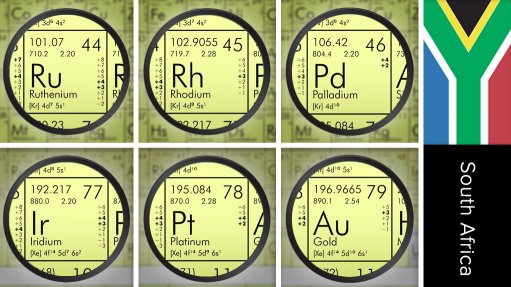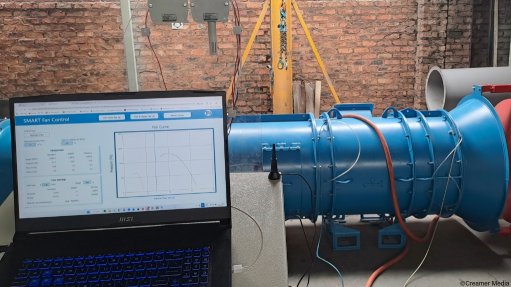Industrial processes’ expensive-to-capture CO2 can tackle AMD, says Royal HaskoningDHV
Unwanted carbon dioxide (CO2) produced in industrial processes, which is often too expensive to capture, can effectively be used in the mining industry to treat the problem of acid mine drainage (AMD), using the Council for Scientific and Industrial Research’s (CSIR’s) Alkali Barium Calcium (ABC) desalination process, as opposed to the common lime treatment process.
Sulphur recovery from gypsum processing using CO2 is also a good method of capturing unwanted CO2.
These alternatives were highlighted by Royal HaskoningDHV industrial process portfolio manager David Johnson at the ninth yearly South African Energy Efficiency Convention, held at Emperors Palace in Johannesburg, last month.
Johnson, who helps large industry to optimise their operations, while also seeking energy efficiency opportunities, points out that State-owned power utility Eskom is the largest CO2 emitter in South Africa, while miners BHP Billion, Anglo American and Gold Fields, cement producer PCC, as well as petrochemi-cals group Sasol are also emitters of CO2.
These emitters are currently using coal, which is in high demand and currently facing an industrial-use shortage, to clean their process water, says Johnson.
He instead suggests using the CSIR’s ABC process as an alternative, which can desalinate an estimated 200 M∙/d of AMD.
The ABC process extracts and precipitates the calcium carbonate out of the steam by adding CO2 to the reaction process.
In a plant that is used to desalinate 200 m∙/d of AMD, one can avoid producing 132 t/d of CO2 and absorb a further 237.6 t/d.
This process works similarly in gypsum processing, where a high purity sulphur can be recovered from the process by adding CO2 to the reaction process.
In the process, the gypsum is reduced to calcium sulphide and the sulphide is stripped using CO2 gas to produce the sulphur.
This process recovers about 600 kilotons of sulphur and 2 750 t of CO2 a day.
By using this process as an alternative to the use of lime as a neutralising agent in AMD, additional CO2 can be absorbed, says Johnson.
In addition, the increasing use of the ABC process over the lime treatment process in the AMD treatment process will also reduce the production of CO2 at source in the cement factory, which produces lime from limestone through the burning of coal.
Article Enquiry
Email Article
Save Article
Feedback
To advertise email advertising@creamermedia.co.za or click here
Press Office
Announcements
What's On
Subscribe to improve your user experience...
Option 1 (equivalent of R125 a month):
Receive a weekly copy of Creamer Media's Engineering News & Mining Weekly magazine
(print copy for those in South Africa and e-magazine for those outside of South Africa)
Receive daily email newsletters
Access to full search results
Access archive of magazine back copies
Access to Projects in Progress
Access to ONE Research Report of your choice in PDF format
Option 2 (equivalent of R375 a month):
All benefits from Option 1
PLUS
Access to Creamer Media's Research Channel Africa for ALL Research Reports, in PDF format, on various industrial and mining sectors
including Electricity; Water; Energy Transition; Hydrogen; Roads, Rail and Ports; Coal; Gold; Platinum; Battery Metals; etc.
Already a subscriber?
Forgotten your password?
Receive weekly copy of Creamer Media's Engineering News & Mining Weekly magazine (print copy for those in South Africa and e-magazine for those outside of South Africa)
➕
Recieve daily email newsletters
➕
Access to full search results
➕
Access archive of magazine back copies
➕
Access to Projects in Progress
➕
Access to ONE Research Report of your choice in PDF format
RESEARCH CHANNEL AFRICA
R4500 (equivalent of R375 a month)
SUBSCRIBEAll benefits from Option 1
➕
Access to Creamer Media's Research Channel Africa for ALL Research Reports on various industrial and mining sectors, in PDF format, including on:
Electricity
➕
Water
➕
Energy Transition
➕
Hydrogen
➕
Roads, Rail and Ports
➕
Coal
➕
Gold
➕
Platinum
➕
Battery Metals
➕
etc.
Receive all benefits from Option 1 or Option 2 delivered to numerous people at your company
➕
Multiple User names and Passwords for simultaneous log-ins
➕
Intranet integration access to all in your organisation
















